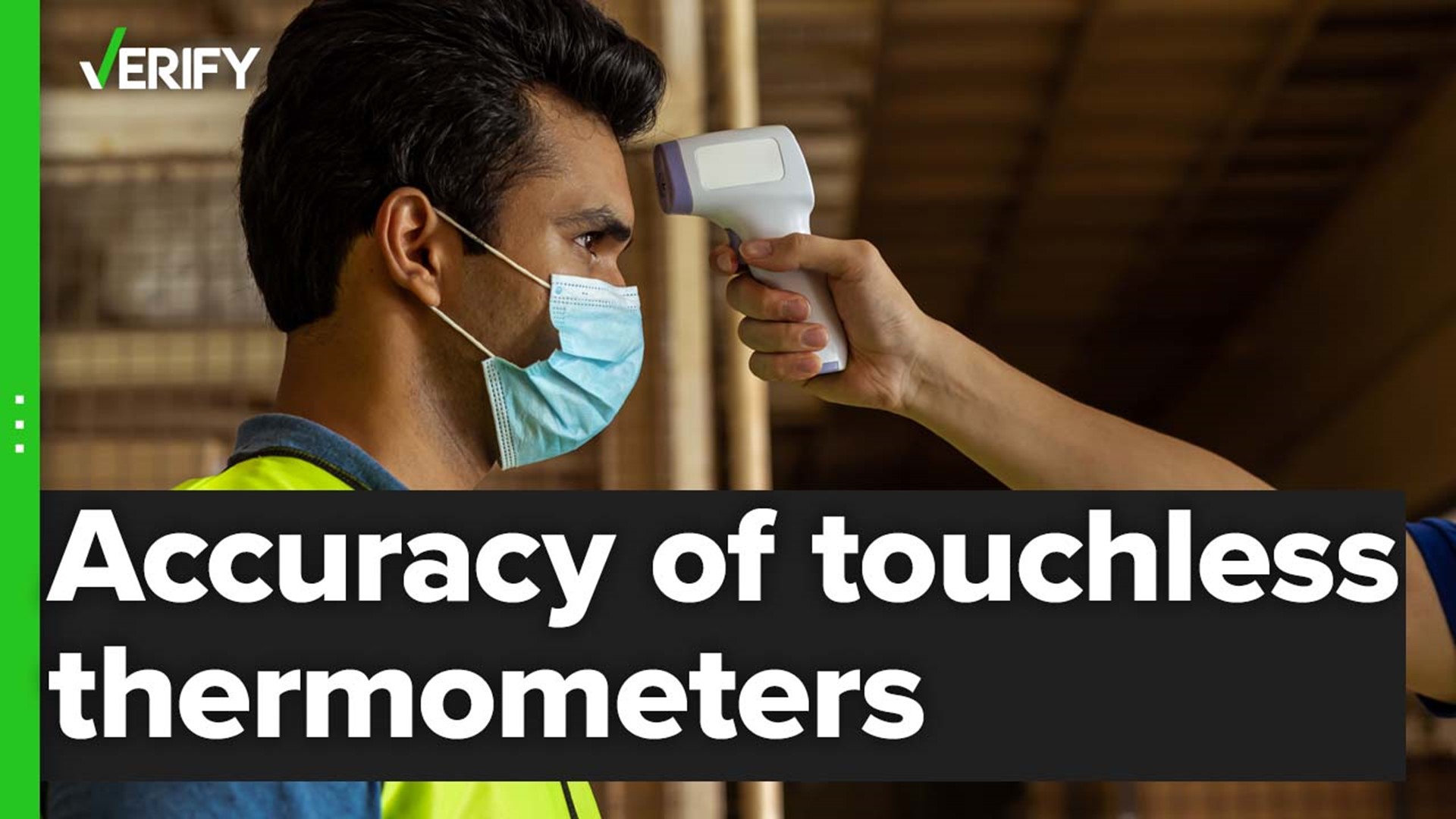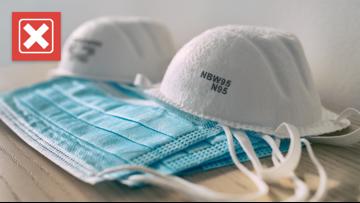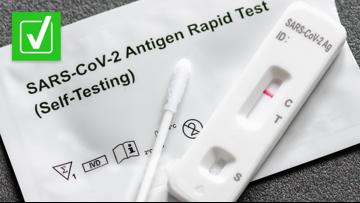One of the most common symptoms of COVID-19 is a fever. According to the CDC, a fever typically appears 2-14 days after exposure. There are a couple common types of thermometers sold for home use in stores: oral, where you usually take someone’s temperature under their tongue, or touchless, most often used by pointing the thermometers at someone’s forehead from a few inches away.
One VERIFY viewer, Enola, emailed VERIFY to ask whether touchless thermometers or oral thermometers are more accurate.
THE QUESTION
Are oral thermometers more accurate than touchless thermometers?
THE SOURCES
C.S. Mott Children’s Hospital, University of Michigan Health
THE ANSWER
Yes, oral thermometers are more accurate than touchless thermometers. Touchless thermometers are still useful for screening large numbers of people, such as in healthcare settings.
WHAT WE FOUND
Multiple hospital systems, including Scripps Health and the Cleveland Clinic, say internal thermometers, which include oral thermometers, are the “gold standard in healthcare.” But while oral thermometers are considered the gold standard, experts say touchless thermometers are still consistent when used correctly — and as long as you take into account it measures your temperature slightly lower than oral thermometers.
Generally, touchless forehead thermometers read temperatures 0.5°F (0.3°C) to 1°F (0.6°C) lower than oral thermometers, C.S. Mott Children’s Hospital says. One study researching the accuracy of touchless forehead thermometers from May 2020 recommended that 36°C, which is equivalent to about 96.8°F, be used as the fever threshold for these thermometers.
Scripps Health says all thermometers are designed to read body temperatures accurately and must meet certain federal standards before they can be sold in the United States. So any thermometer you buy should reliably detect a fever as long as you use it correctly.
“Research has shown that, when used correctly, infrared or no-contact thermometers are just as accurate as oral or rectal thermometers,” Cleveland Clinic says. “No-contact thermometers are popular among pediatricians, as kids often squirm around when trying to get a temperature read, but it also holds true in mass temperature screenings.”
Their usefulness in mass temperature screenings have made touchless thermometers a healthcare standard in the age of COVID-19, Cleveland Clinic says.
But the Mayo Clinic says contactless thermometers can be more expensive than other types of thermometers and their accuracy can be affected by improper use.
“Direct sunlight, cold temperatures or a sweaty forehead can affect temperature readings,” the Mayo Clinic says. “Variations on user technique, such as holding the scanner too far away from the forehead, also may affect accuracy.”
The Food and Drug Administration (FDA) lists a number of things you have to do to use a touchless thermometer correctly. The thermometer should be used in a draft-free space with a humidity under 85%. It should be placed in the room you plan to use it in 10-30 minutes before use so it can adjust to the environment. The person whose temperature is being measured can’t wear excessive clothing, headcovers, or facial cleansing products that will increase or decrease their body temperature or temperature at their forehead.
When using the touchless thermometers, you should hold it perpendicular to a person’s forehead and hold it at the distance recommended by the manufacturer, the FDA says. The sensor should be kept clean and dry. Any incorrect use of a touchless thermometer can impact its accuracy.
The one rule for oral thermometers: Don’t use old mercury thermometers, Scripps and the Mayo Clinic say. The Mayo Clinic says you should contact your local trash collection program to see if there's a hazardous waste collection site in your area — but don’t throw it into the trash.
More from VERIFY: Yes, there are ways to determine if a KN95 or N95 mask is counterfeit












